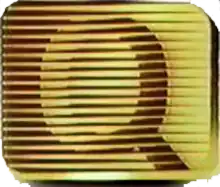Qintex
Qintex Limited was an Australian financial services company founded in 1975 as Takeovers, Equities & Management Securities (TEAM). It was renamed Qintex Limited and came to prominence in 1986, collapsing five years later in 1991. Its main shareholder and Managing Director was Christopher Skase.
 | |
| Formerly | Takeovers, Equities & Management Securities (1975-1986) |
|---|---|
| Type | Public |
| ASX: QNT | |
| Industry | Media, Hotels, Retail |
| Founded | 1975 as Takeovers, Equities & Management Securities (TEAM)[1] |
| Defunct | January 1991 |
| Fate | Fell into bankruptcy and receivership Assets bundled together & placed within Seven Network Limited |
| Successor | Seven Network Limited |
| Headquarters | Brisbane, Australia |
Key people | Christopher Skase (Managing Director)[1] |
| Subsidiaries |
|
At its peak, Qintex owned interests in Channel 7, Mirage Resorts, Hardy Brothers jewellery retail concern and a number of other businesses.
Its headquarters was in Brisbane, Australia.
History
Qintex was established in 1975 by Christopher Skase and his partners. Skase expanded the company substantially, initially into retail with investments in Hardy Bros and car dealer Nettlefolds. Qintex also expanded into property development.
In 1984, Qintex bought television station TVQ-0 in Brisbane.[2] Later Qintex purchased HSV-7 and ATN-7 in Melbourne and Sydney from John Fairfax & Sons. In 1986, the company invested in an entertainment company named Qintex Entertainment (today Sonar Entertainment), formed by the merger of American studios Hal Roach Studios and Robert Halmi Incorporated.
In 1989, the company was struggling to meet interest payments and sold its share in Mirage Resorts for in excess of $433 million.
Collapse
The first signs of collapse showed in October 1989, when the American subsidiary filed for Chapter 11 bankruptcy protection after Qintex failed to provide financing for a debt payment.[3] The Australian Stock Exchange suspended Qintex's stock shortly after when the company failed to respond to questions of its financial health. A month later, in November 1989, Qintex Ltd went into receivership with debts of over A$1.9 billion.[4] The collapse happened just six weeks after the company lost a bid to acquire MGM/UA studios for A$1.5 billion.
Its collapse was prompted by what was later seen as an excessive amount of debt in the business.
This coincided with very high interest rates that prevailed in 1989. When the company missed interest payments and was not able to renegotiate its position with the Commonwealth Bank, the bank appointed a receiver to the company.
It was in 1991 that bank-appointed receivers created Seven Network Limited in order to bundle together the company's assets.[5][6]
References
- Caslon Analytics (2006). "Seven Network - Skase & Qintex". Archived from the original on 30 September 2007. Retrieved 1 May 2007.
- Qld TV channel pursuing media interest Canberra Times 6 May 1984 page 3
- Stevenson, Richard W.; Times, Special to The New York (21 October 1989). "Qintex Unit Files for Bankruptcy". New York Times. ISSN 0362-4331. Retrieved 15 July 2019.
- Bill, Richard. "Qintex Latest Failure of Major Australian Company With U.S. Operations". AP NEWS. Retrieved 15 July 2019.
- Bartholomeusz, Stephen (11 May 2021). "Kerry Stokes thumbs a well-worn playbook for '$8 billion' Boral bid". The Age.
- Release, Press (8 November 2020). "Seven Group Holdings Limited (formerly Seven Network Limited)". NewsnReleases.